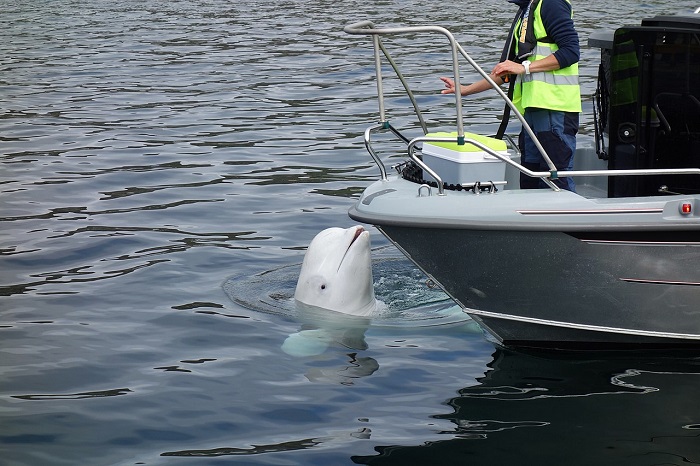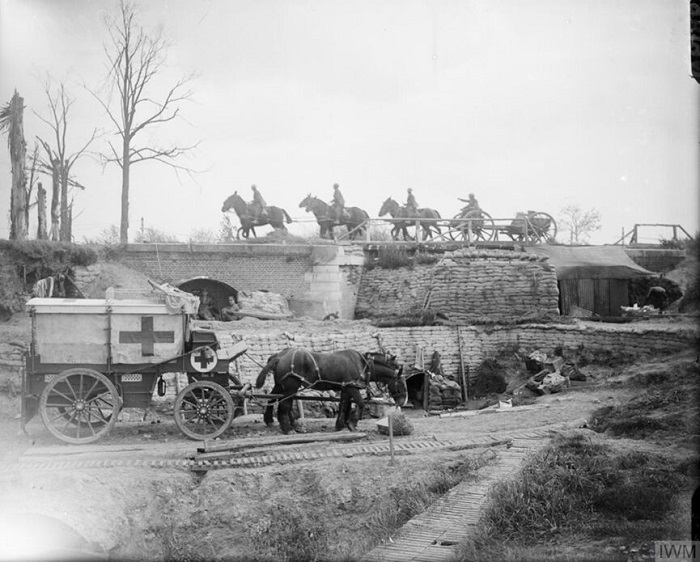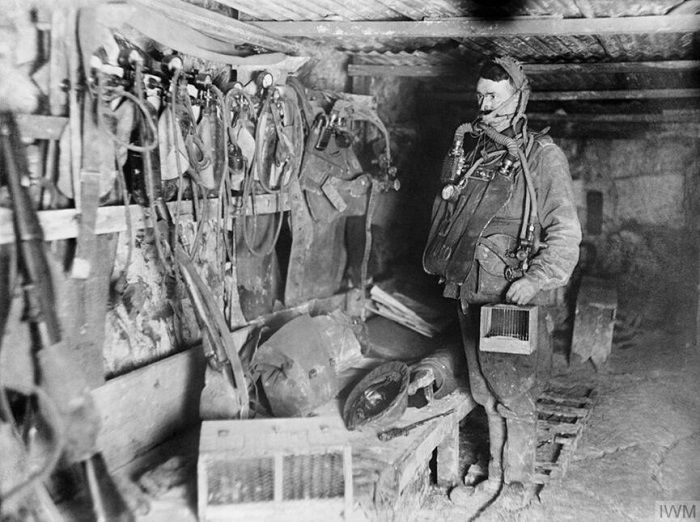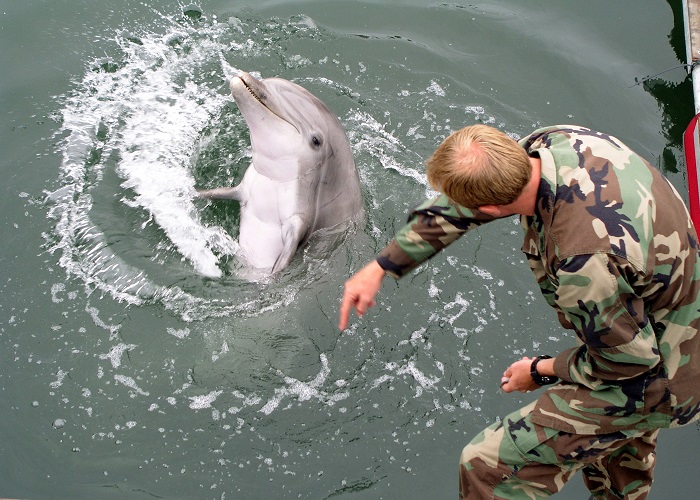ISABEL RUBIO ARROYO | Tungsteno
Russia has deployed trained dolphins to protect a naval base in the Black Sea during the invasion of Ukraine, according to the United States Naval Institute (USNI). This is not the first time that trained or device-equipped animals have been used during armed conflict. For decades, humans have used marine animals such as whales and seals, and other creatures such as horses, elephants, pigeons and dogs in wars and humanitarian emergencies. We look at the role these animals have played in ensuring security, communications and transport.
Dolphins and whales in military training
Two pens of dolphins were moved to the base at the Sevastopol harbour—Russia's largest naval base on the Black Sea—in February, the same month that the Russian invasion of Ukraine began, according to a USNI analysis of satellite imagery. "The dolphins may be tasked with counter-diver operations—a traditional role both the U.S. and Russia have trained marine mammals for," the USNI explained. In theory, this could prevent Ukrainian special operations forces from infiltrating the harbour underwater to sabotage warships.
Russia has used dolphins in other conflicts, sometimes as spies with surveillance equipment attached to their bodies. In fact, satellite imagery from 2018 suggests that these animals were used at the naval base at Tartus in Syria during the Syrian war. In addition to dolphins, Russia has in recent years relied on other marine mammals with thicker layers of blubber to keep warm in the Arctic north, such as beluga whales and seals. In fact, in 2019 a beluga whale wearing a Russian harness appeared in northern Norway. The country's intelligence agency believed the animal had probably been part of a Russian research programme, according to the BBC.

Fishermen in Norway spotted a beluga whale in 2019 wearing a harness rigged to carry a camera. Credit: Ein Dahmer / Wikimedia Commons.
From camels transporting the wounded to carrier pigeons
For centuries, humans have also used all kinds of animals in warfare as a means of transport. For example, during the First World War, which took place between 1914 and 1918, combatants on both sides had large cavalry forces mounted on horses and camels, as noted by the Imperial War Museum. While horses were faster, camels better withstood the harsh conditions in desert and semi-arid lands. Both animals were also used to transport the wounded. In addition to horse-drawn ambulances, camels were equipped with a kind of stretcher on their sides to carry injured men to safety.
Other animals such as mules, donkeys, oxen and even elephants were used in both World Wars to carry heavy loads and to assist in the construction of roads and railways. After the Second World War, two circus elephants in Hamburg, Germany, named Kiri and Many, were mobilised to help clean up the damage from Allied bombing.
Meanwhile, pigeons and dogs have been trained to carry messages in such conflicts. In fact, carrier pigeons played such a vital role during the First World War that, under British law, anyone who killed or injured one could be imprisoned or fined. Dogs have been particularly useful in locating landmines (as have rats) or other explosive devices. Thanks to their keen sense of smell, dogs are also able to seek out soldiers and civilians in danger or in need of help.

A horse-drawn ambulance on the Western Front during the First World War. Credit: Imperial War Museum.
Rescue dogs and canaries in coal mines
Precisely for this reason, dogs are often of great help in locating survivors in other disasters, such as collapsed buildings or earthquakes. "They can detect live human scent, even if a survivor is buried deep in rubble," says the US Federal Emergency Management Agency (FEMA). The most common breeds for this type of work are Labrador, German Shepherd, Golden Retriever, Malinois and Border Collie.
Some animals were also used to ensure safety in places such as mines before electronic detectors were available. Miners in the UK used to take canaries down into coal mines to detect possible toxic gases. These animals are more sensitive than humans to carbon monoxide and other poisonous gases. In the 1890s, John Scott Haldane, also known as the “father of oxygen therapy,” suggested that if canaries became ill or died in the mine, that would give miners a warning to evacuate.
Around the same time, in other places such as Colorado (USA), coal miners were keeping an eye on the behaviour of mice, which were quite sensitive to changes in the mines’ air quality. If the rodents appeared lethargic, miners knew there was trouble afoot, according to the Denver Public Library. These animals also had extremely good hearing. When the mice scattered unexpectedly, it could mean that mine beams had broken somewhere in the shaft or that a roof collapse was imminent.

The cages were used to transport mice or canaries, which were utilised to detect the presence of poison gas in wars and in coal mines. Credit: Imperial War Museum
These are just a few examples of the potential that humans have seen in dolphins, whales, seals, horses, camels, dogs, mice and canaries for transport, communication, surveillance, search and rescue and ensuring safety in potentially dangerous places. Their skills, strength, endurance, sharpness and highly developed senses make these animals a great help in extreme conditions.
· — —
Tungsteno is a journalism laboratory to scan the essence of innovation. Devised by Materia Publicaciones Científicas for Sacyr’s blog.
